INGREDIENTS
2 heads cabbage
kosher salt
5 – 6 garlic cloves, peeled and trimmed
Sauerkraut, by one name or another, has probably been around forever. Ancient Roman writers mention it as a way of keeping cabbage. In France, it is known as choucroute, and in the Netherlands, it is zuurkool, but no matter what you call it, sauerkraut is absolutely fantastic.
As far as fermented foods go, sauerkraut is a great choice for home cooks looking to get into preservation. With only two main ingredients and a fairly fool-proof preparation, sauerkraut can be put together in an afternoon, and a month later, you will have a season’s worth of the food. Our recipe adds a little garlic for flavor, but you can add additional herbs and spices, like caraway seeds, or additional vegetables, like carrots or radishes, which will bring much added bursts of color and added texture.
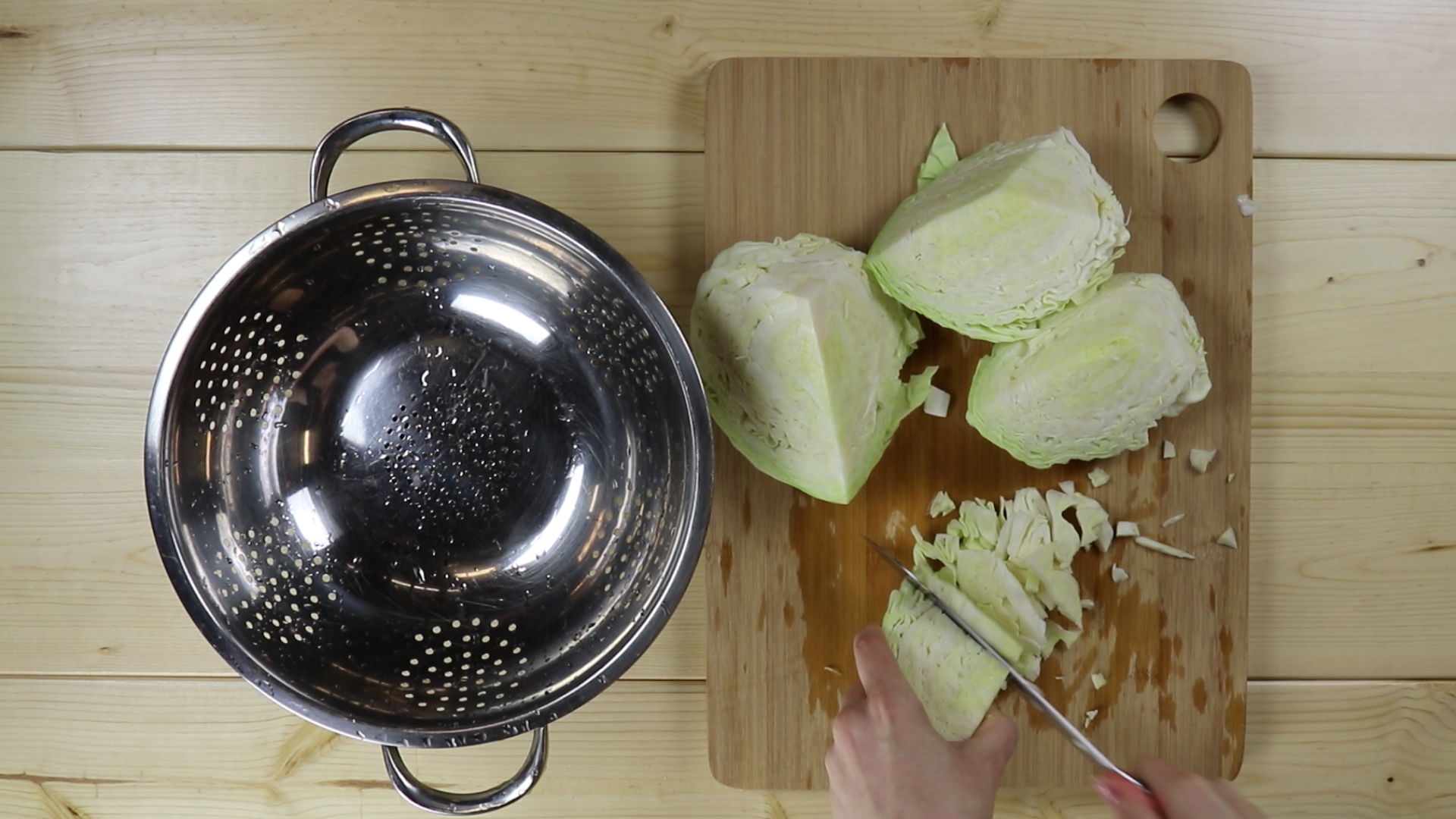
Step One. Chop the cabbage
Remove the large, outside layers of cabbage and put aside for later. Quarter the cabbage, trimming off the bottom. Chop the cabbage into thin ribbons. Set aside.

Step Two. Add the garlic
Add a layer of cabbage into a bowl. On top of it, add a small handful of chopped garlic.
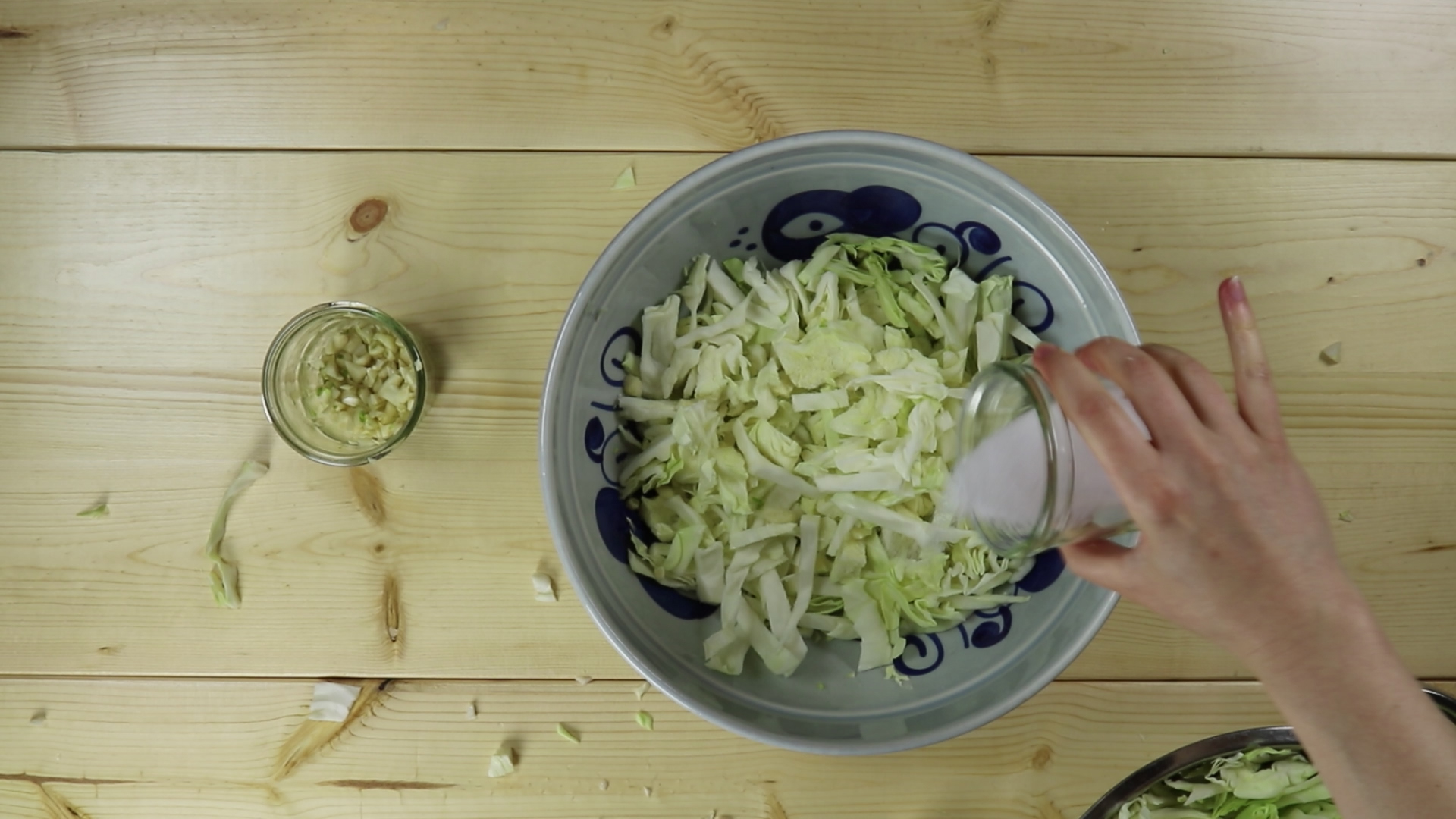
Step Three. Add the salt
Add a generous sprinkle of kosher salt. Then, add another layer of cabbage. Continuing altering between a layer of cabbage, a layer of garlic and a layer of salt until you run out of cabbage.
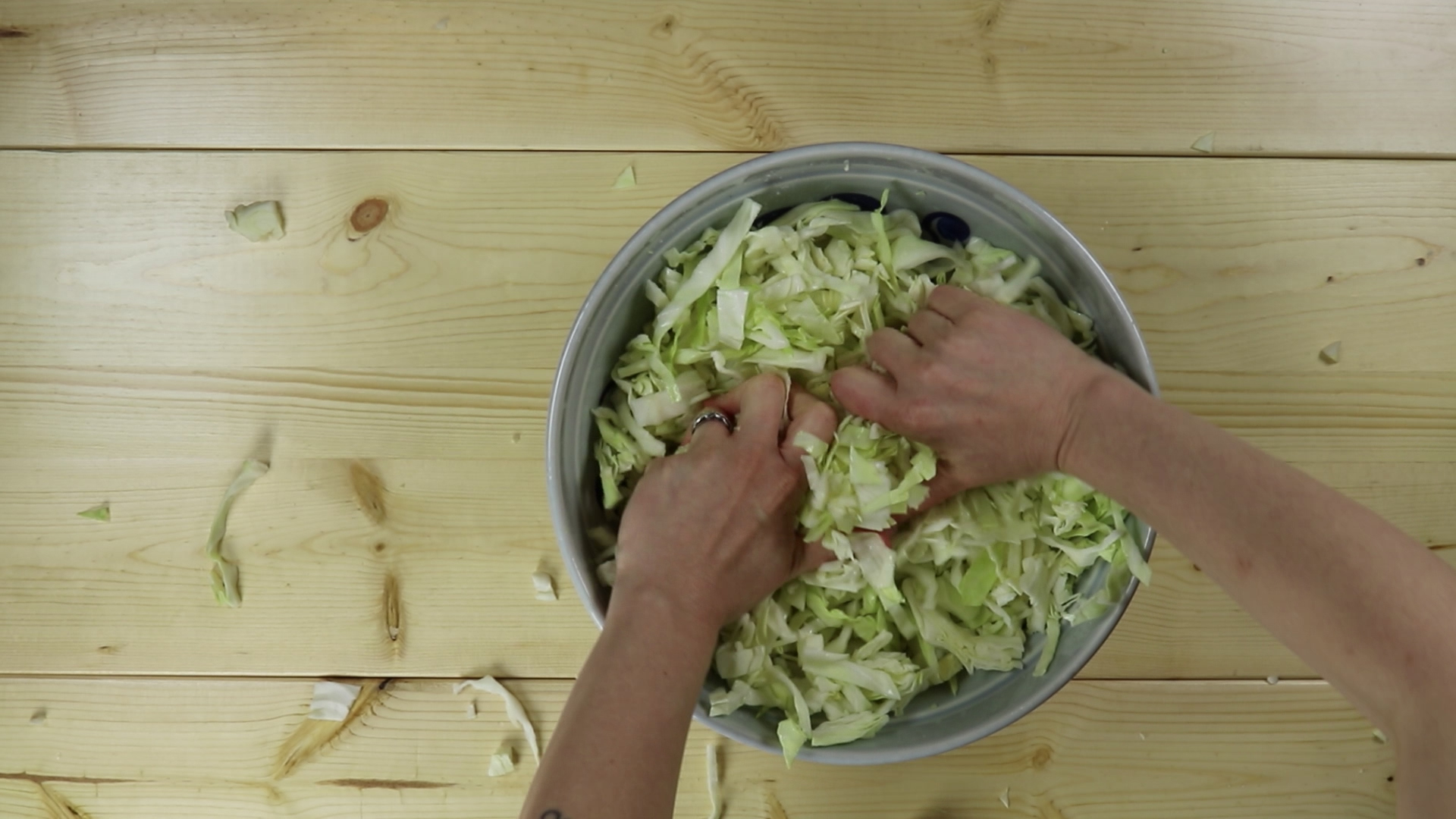
Step Four. Get your hands in there
Massage the mixture of cabbage, garlic and salt. You really want to get in there and help the salt break down the cabbage’s cellular walls. Once you have thoroughly worked it over, let the cabbage rest for a half hour to allow the salt to continue to pull out moisture.
As you are working with salt, you may want to wear gloves to prevent skin irritation.

Step Five. Pack the fermentation crock
Once the cabbage has been allowed to rest, you will find that it is wetter and softer than once you’ve first started. Pack this mixture of cabbage, garlic and salt into the fermentation crock. You want to really pack the mixture in as tight as possible. We used the bottom of a drinking glass to help compress the cabbage. Pour any remaining cabbage liquid into the fermentation crock.
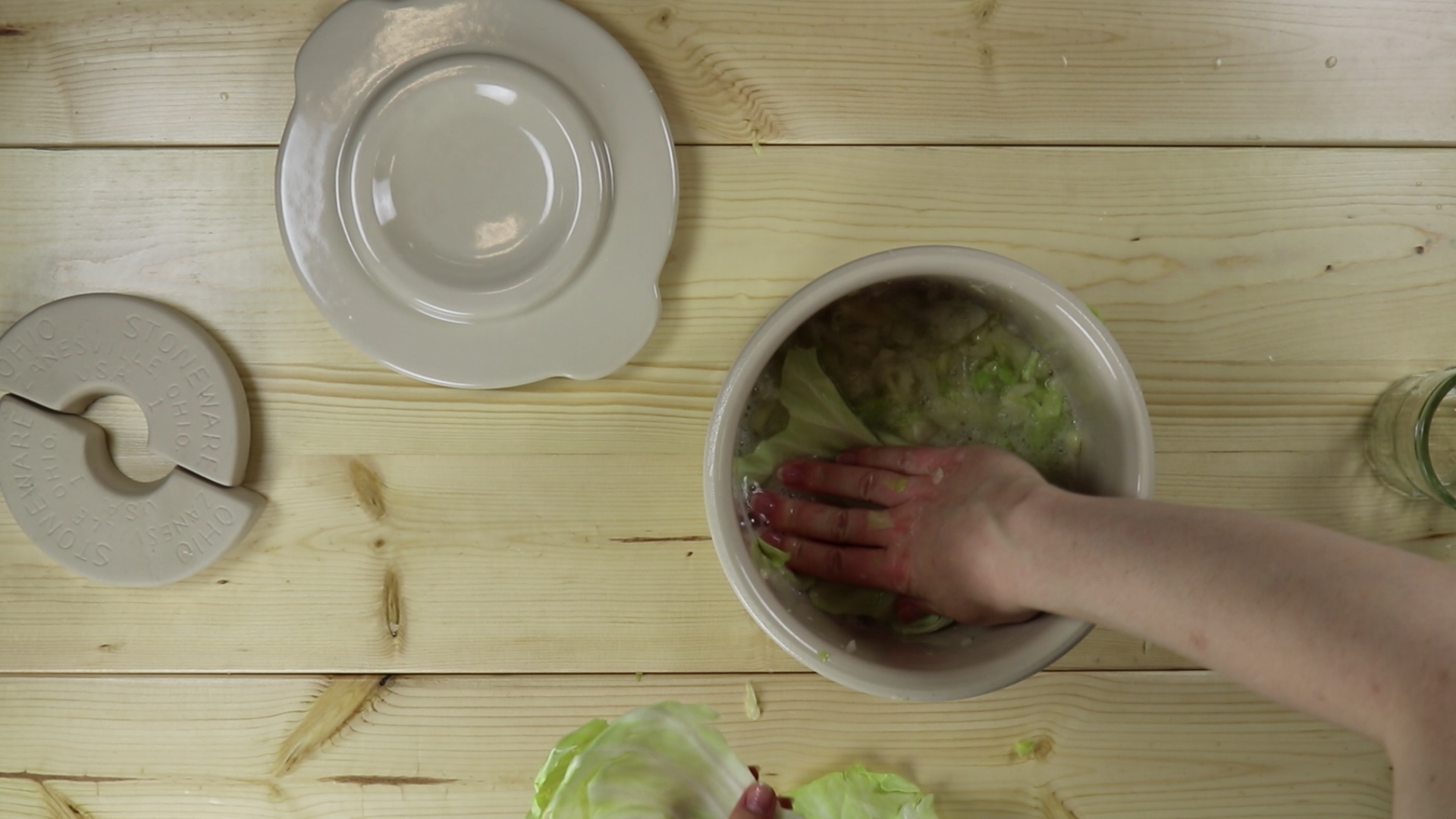
Step Six. Finish packing the crock
Use the large leaves saved from the beginning to cover the cabbage mixture.
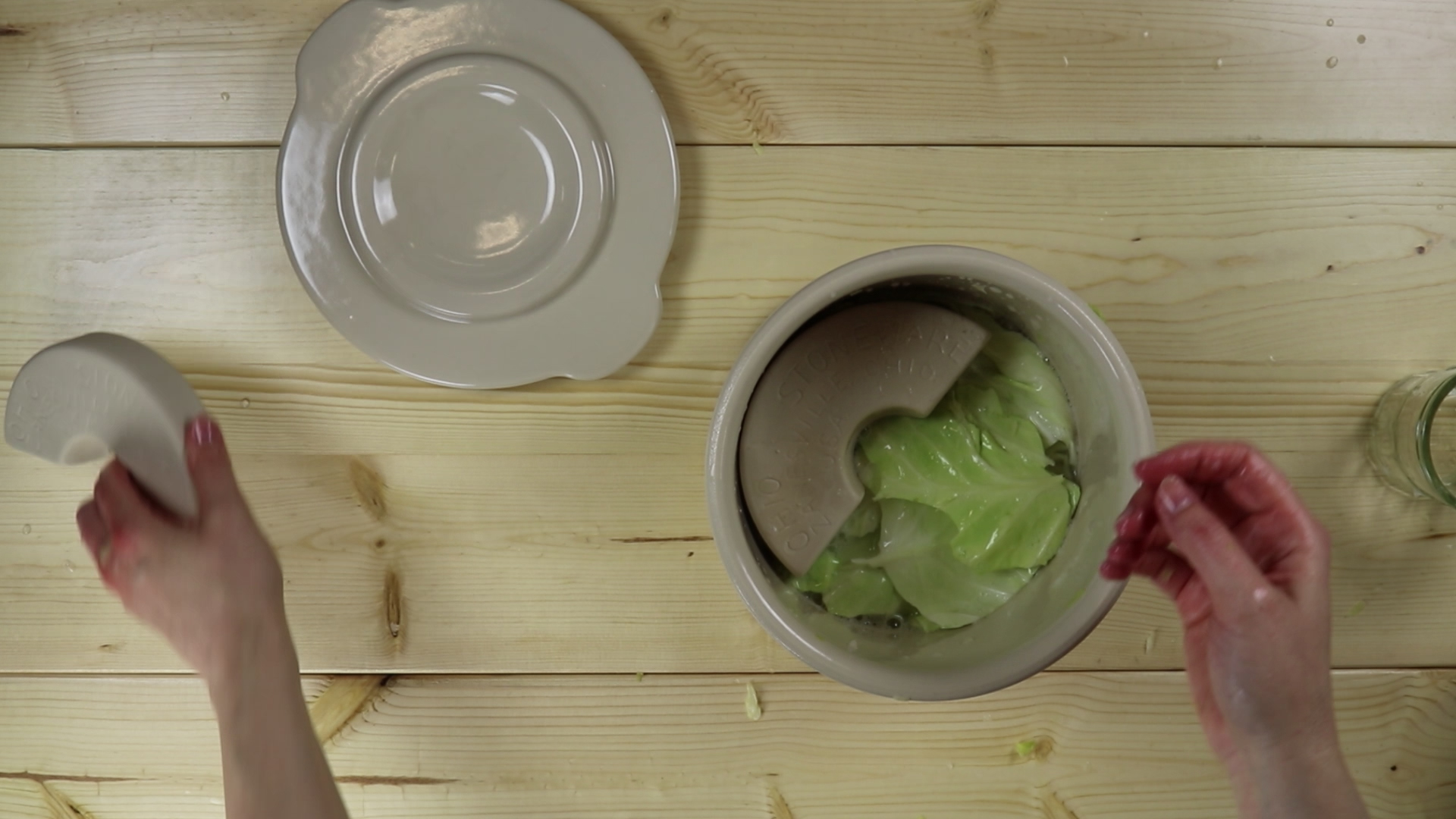
Step Seven. Add the weights
Place the fermentation weights on top of the large cabbage leaves and press down. You want to get the leaves beneath the brine layer. Anything exposed to the air will mold, contaminating the future sauerkraut.
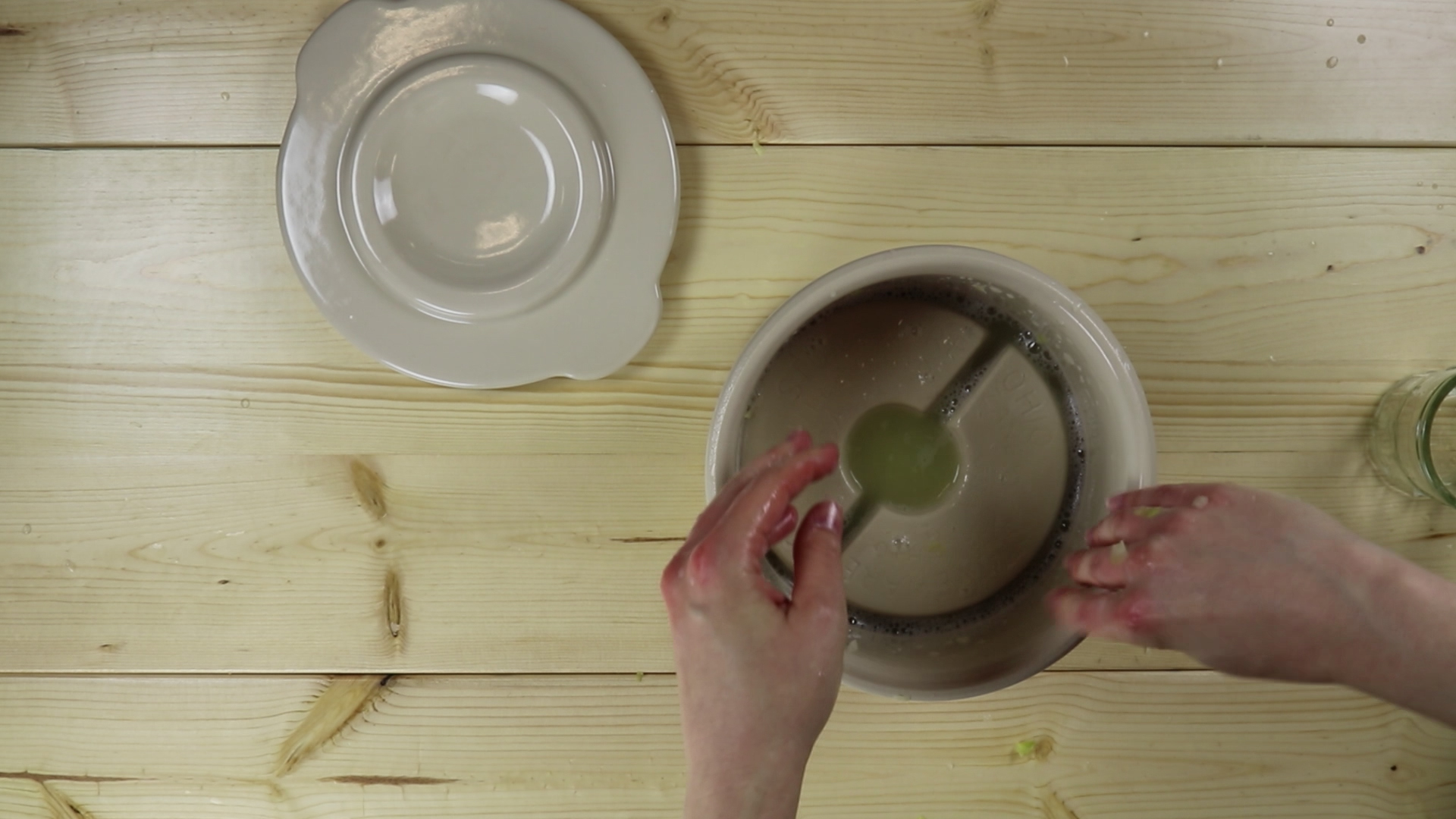
Step Eight. Put the lid on and put it away
Once the weights have been added and the cabbage mixture is beneath the water lid, seal the fermentation crock with its lid and place it in a cool, dark place to ferment. Sauerkraut requires three to four weeks time to fully ferment, and during this time, there will be an odor as it off gases. If you are offended by the smell of sauerkraut, make sure to keep it in a closed closet or a garage during this time.

It’s time to break out the bratwurst
If you ask five people, six of them will tell you that the best way to eat sauerkraut is on sausages and hot dogs, but don’t let their enthusiasm fool you. You can use sauerkraut everywhere. It’s fantastic on a Reuben, but you can toss it on any sandwich, cold or grilled, for an added bite. Chop it up, and its great added in as a finish to soups and salads, or you can stick it in between layers in a casserole or even inside of a chocolate cake for a taste that can’t be beat.
If you’re one of those people on the fence about sauerkraut, or if you’ve only been in love with the stuff from the grocery store, do your palate and your culinary repertoire a favor and make yourself a batch. You may be a sauerkraut believer.
